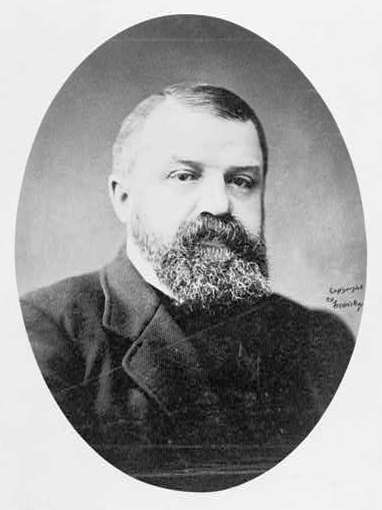Portraits of Revival-Dwight Lyman Moody-Part 1
 If I know my own heart to-day, I would rather die than live as I once did, a mere nominal Christian, and not used by God in building up His Kingdom. It seems a poor empty life to live for the sake of self.–D.L. Moody
If I know my own heart to-day, I would rather die than live as I once did, a mere nominal Christian, and not used by God in building up His Kingdom. It seems a poor empty life to live for the sake of self.–D.L. Moody
D.L. Moody (1837-1899) said that “Someday you read in the papers that D.L. Moody, of East Northfield, is dead. Don’t you believe a word of it!
At that moment I shall be more alive than I am now, I shall have gone up higher, that is all; out of this old clay tenement into a house that is immortal—a body that death cannot touch; that sin cannot taint; a body fashioned like His glorious body.
I was born of the flesh in 1837. I was born of the Spirit in 1856. That which is born of the flesh may die, that which is born of the Spirit will live forever.”
It hadn’t been since the days of George Whitefield that and John Wesley, a century earlier, that the world had seen an evangelist who would move two continents for Christ, as did D.L. Moody.
During his travels between Europe and America, Moody personally witnessed to over 750,000 people, preached to more than 100 million, and led over a million into a personal relationship with Jesus Christ.
God used him to erect numerous churches, and he founded educational institutions including the Northfield School for boys and girls and the Chicago Evangelism Society, today it is known as Moody Bible Institute.
He also began a publishing company, Moody Publishing, which is still publishing good Christian literature. R.A. Torrey wrote of Moody that:
The first thing that accounts for God’s using D.L. Moody so mightily was that he was a fully surrendered man. Every ounce of that two-hundred-and-eighty-pound body of his belonged to God; everything he was and everything he had, belonged wholly to God.
As a preacher D.L. Moody was much criticized from standpoint of academic homiletics. Nor would any think of defending his preaching method on that ground. But the fact that for thirty-five continuous years, in the centers of culture and of active practical thought in the English-speaking world, this self-taught preacher drew the greatest audiences which faced any modern speaker on any theme—this fact, would say, should suggest to teachers of homiletics that possibly they might learn something from him.
One can only ask the question, “What is the magic power which draws together these mighty multitudes and holds them spellbound?” Is it the worldly rank or wealth of learning or oratory of the preacher? No, for he is possessed of little of these.
It is the simple lifting up of the Cross of Christ—the holding forth the Lord Jesus before the eyes of the people in all the glory of His Godhead, in all the simplicity of His manhood, in all the perfection of His nature, for their admiration, for their adoration, for their acceptance.
Like the apostle Paul, he could say, “For me to live is Christ,” and as a result of that life his gain came at the end of earth’s career. “This one thing I do” was the key to his life of service.
Nothing could swerve him from this deep-rooted purpose of his life, and in all the various educational and publishing projects to which he gave his energy there was but one motive—the proclamation of the Gospel through multiplied agencies.